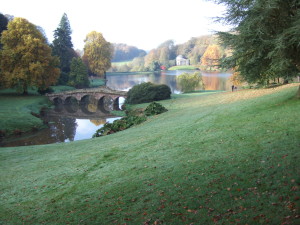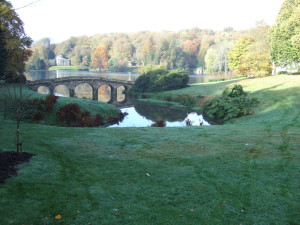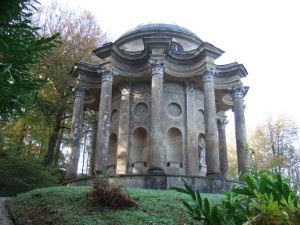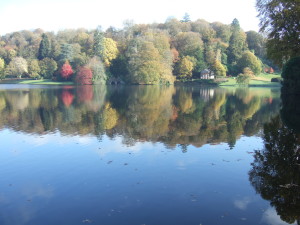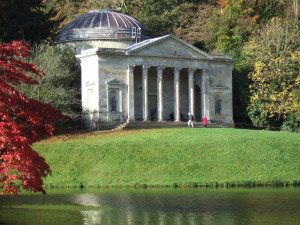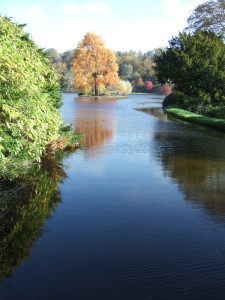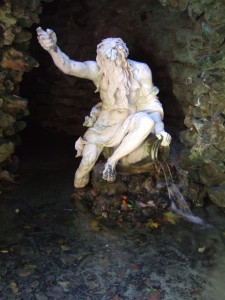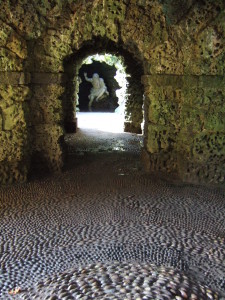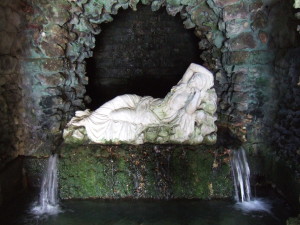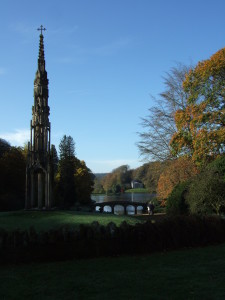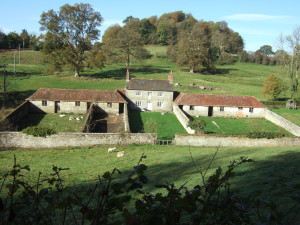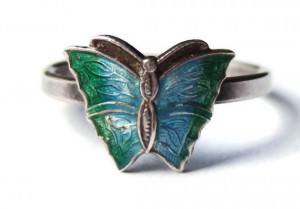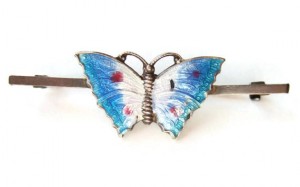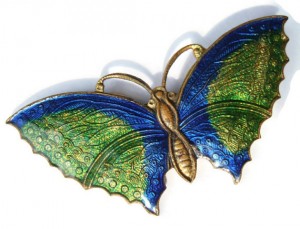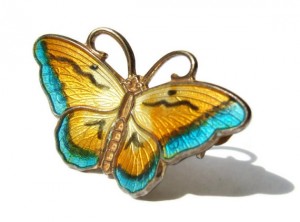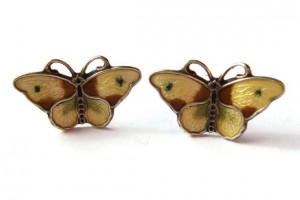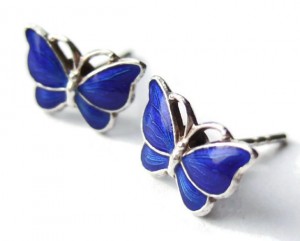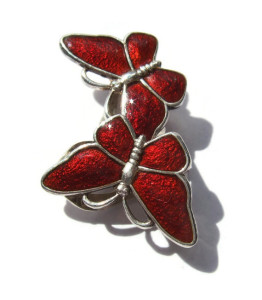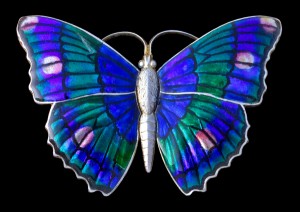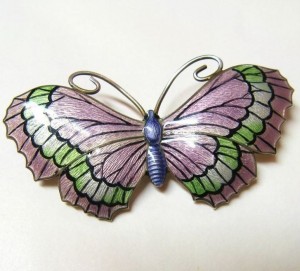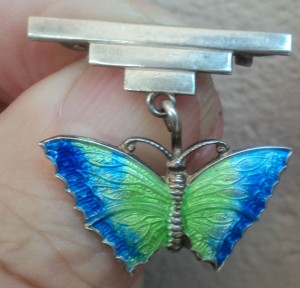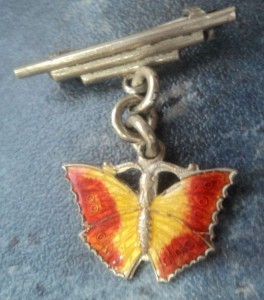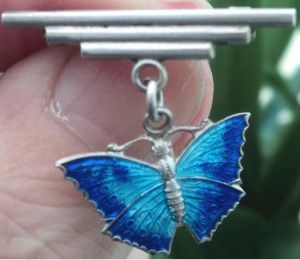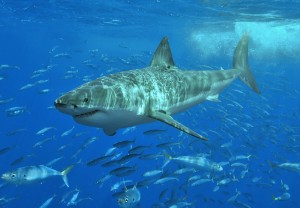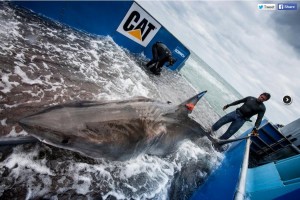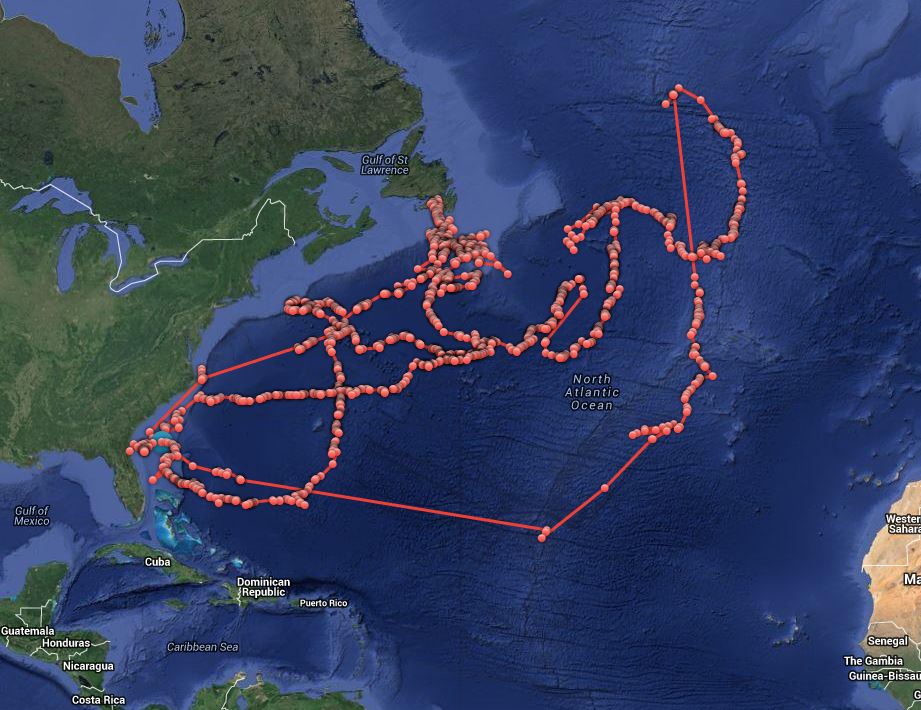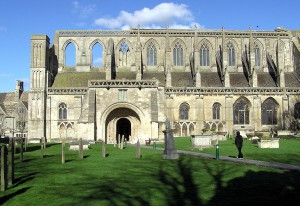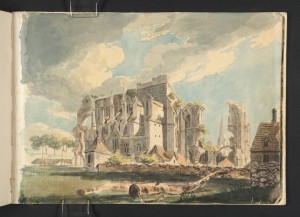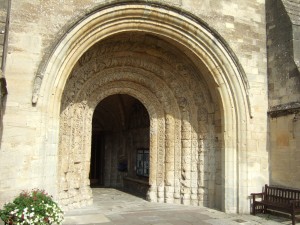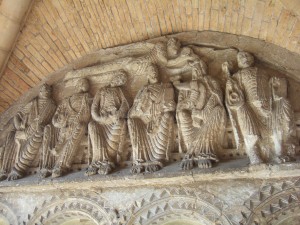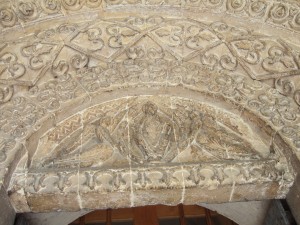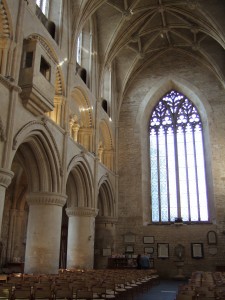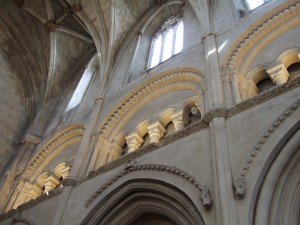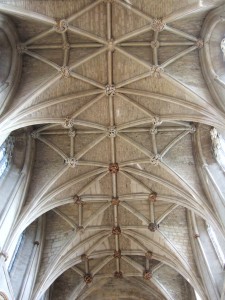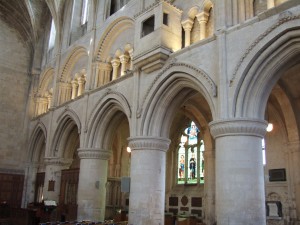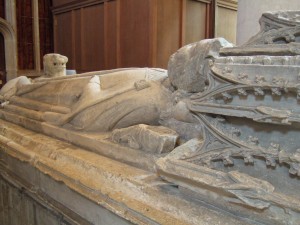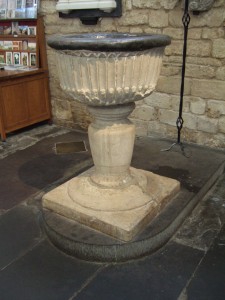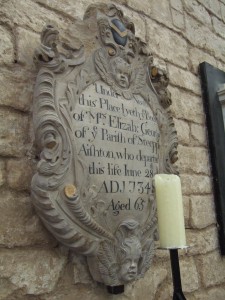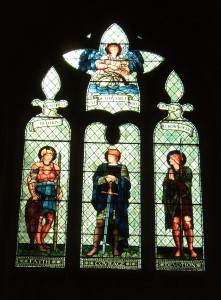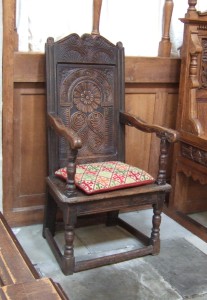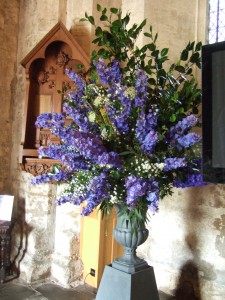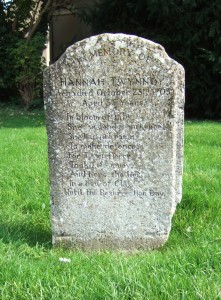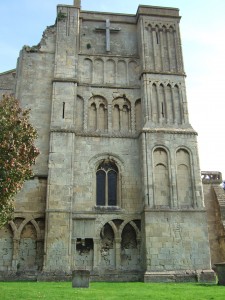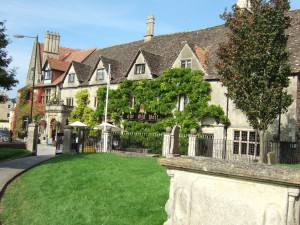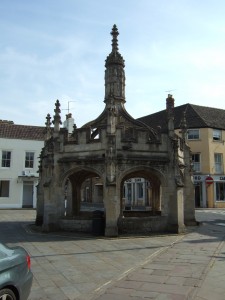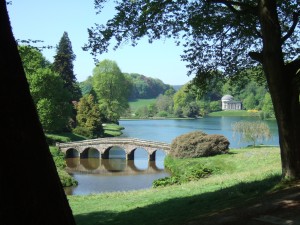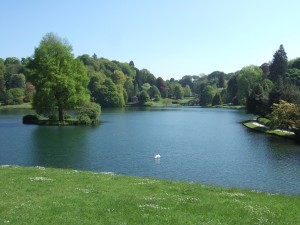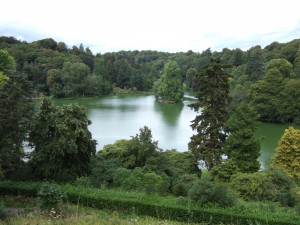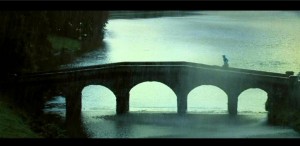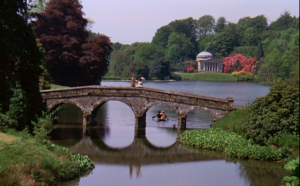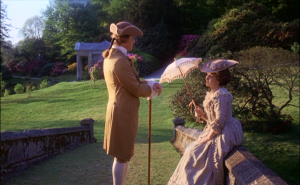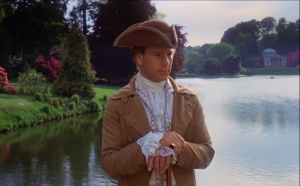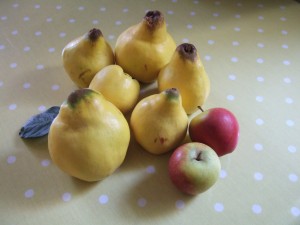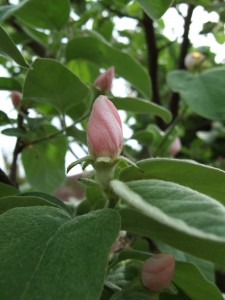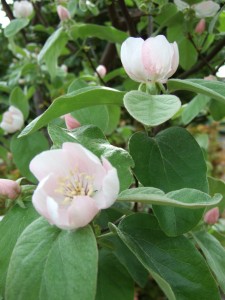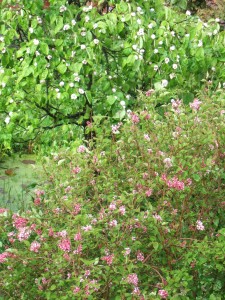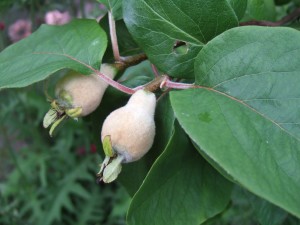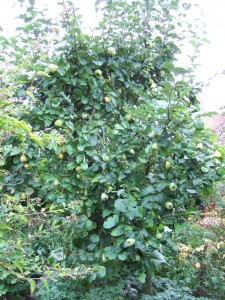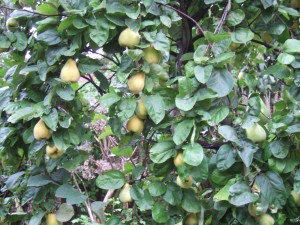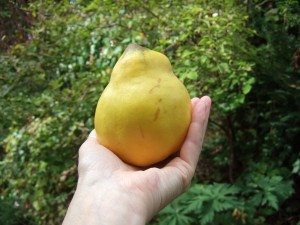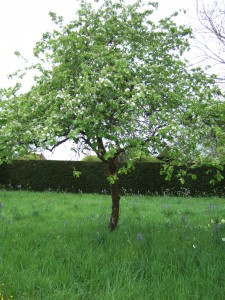PLEASE NOTE: Even though this is an old post, I update it every time I get a new piece of Niels Erik From jewellery for my shop. So if you are interested in his wonderful jewellery, do bookmark this page!
I have a real soft spot for the work of Niels Erik From, the Danish jeweller (1908—1982). He is considered one of the greats of Danish silver design, and his pieces are very collectable. I am lucky to have some of his jewellery for sale in my Etsy shop at the moment. It’s always a great day when I get my hands on some of his beauties! NE From sterling silver daisy pendant and chain. For sale in my Etsy shop, Inglenookery: click on photo for details.
(As this blog post was getting rather unwieldy, I have moved all the NE From items I have sold to a new blog post, which can be found here.)
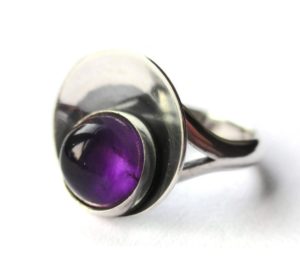
NE From amethyst ring. For sale in my Etsy shop, Inglenookery: click on photo for details.
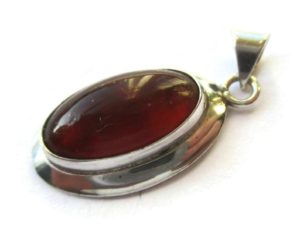
NE From Baltic amber and sterling silver pendant. For sale in my Etsy shop, Inglenookery: click on photo for details.
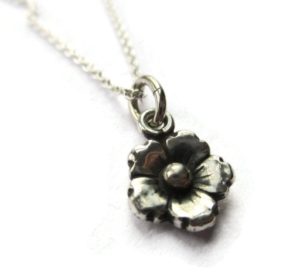
NE From sterling silver daisy pendant and chain. For sale in my Etsy shop, Inglenookery: click on photo for details. (I have three of these in total – please contact me if you would like to buy more than one).
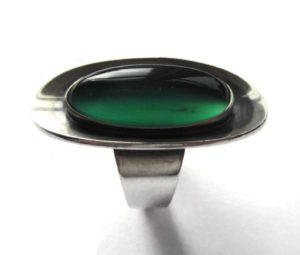
NE From modernist chrysoprase ring. For sale in my Etsy shop, Inglenookery: click on photo for details.
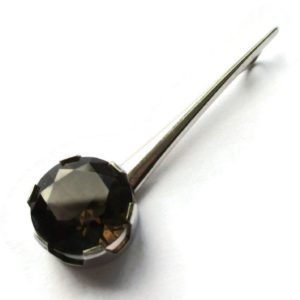
Large and striking NE From facetted smoky quartz pendant with a hidden suspension loop. For sale in my Etsy shop, Inglenookery: click on photo for details.
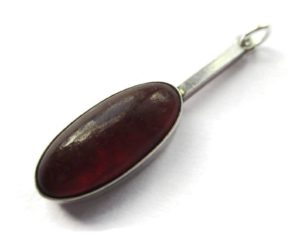
NE From Baltic amber pendant with a sterling silver mount. For sale in my Etsy shop, Inglenookery: click on photo for details.
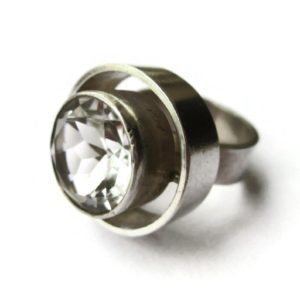
NE From rock crystal modernist ring. For sale in my Etsy shop, Inglenookery: click on photos for details.
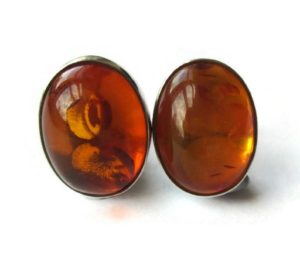
NE From Baltic amber clip on earrings. For sale in my Etsy shop, Inglenookery.
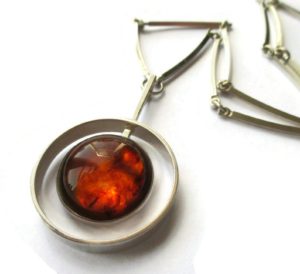
NE From Baltic amber pendant and curved solid bar chain necklace. For sale in my Etsy shop, Inglenookery: click on photo for details.
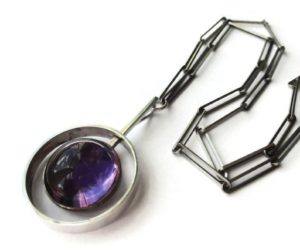
NE From amethyst modernist pendant and paperclip chain. For sale in my Etsy shop, Inglenookery: click on photo for details.
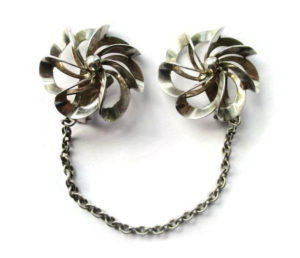
Sweater or collar clips by Niels Erik From: such a fantastic sculptural design. For sale in my Etsy shop, Inglenookery: click on photo for details.
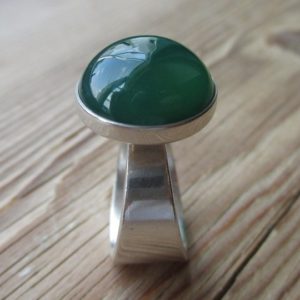
NE From chrysoprase post ring, with a 1974 London import mark. For sale in my Etsy shop, Inglenookery: click on photo for details.
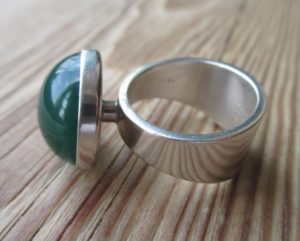
Another view of the NE From chrysoprase post ring, showing the stem under the head. For sale in my Etsy shop, Inglenookery: click on photo for details.
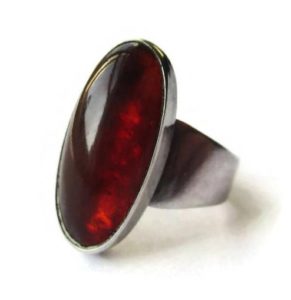
NE From Baltic amber ring. For sale in my Etsy shop, Inglenookery: click on photo for details.
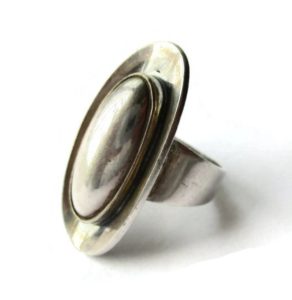
NE From sterling silver ring. This one is UK size H, US size 4 1/4, European size 46, and has an internal diameter of c. 17 mm x 15 mm (the shank is not quite a true circle), but I think it is actually a very slightly larger ring size than this. For sale in my Etsy shop, Inglenookery: click on photo for details.
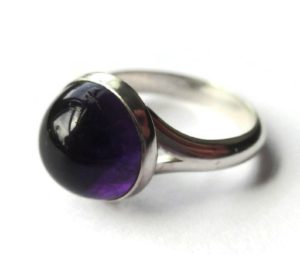
NE From amethyst modernist ring. For sale in my Etsy shop, Inglenookery: click on photo for details.
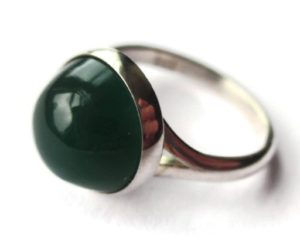
NE From chrysoprase ring. This one is UK size M, US size 6 1/2 – 6 3/4, European size 52 1/2 and has an internal diameter of c. 17.5 mm. For sale in my Etsy shop, Inglenookery: click on photo for details.
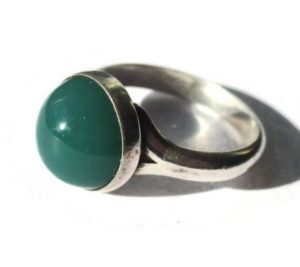
NE From chrysoprase ring. This one is UK size N, US size 7 – 7 1/4, European size 53 1/2 – 54 and has an internal diameter of c. 18 mm. For sale in my Etsy shop, Inglenookery: click on photo for details.
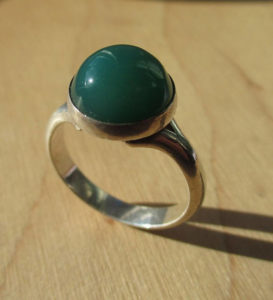
NE From chrysoprase ring. This one is UK size P – P 1/2, US size 8 1/4, European size 56 1/2 and has an internal diameter of 18.5 mm. For sale in my Etsy shop, Inglenookery: click on photo for details.
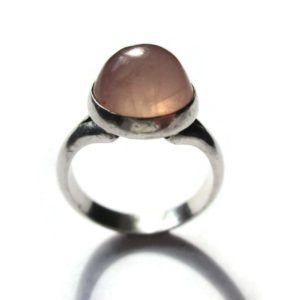
NE From rose quartz ring. For sale in my Etsy shop, Inglenookery: click on photo for details.
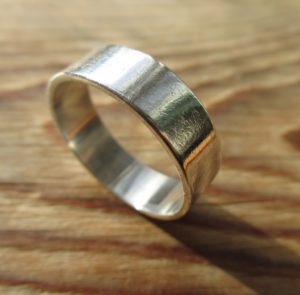
NE From (Niels Erik From) plain sterling silver band. For sale in my Etsy shop, Inglenookery: click on photo for details.
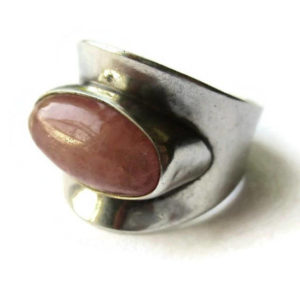
NE From (Niels Erik From) rhodochrosite ring. For sale in my Etsy shop, Inglenookery: click on photo for details.
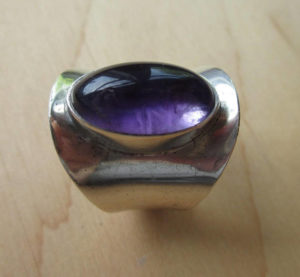
NE From (Niels Erik From) amethyst and sterling silver ring. For sale in my Etsy shop, Inglenookery: click on photo for details.
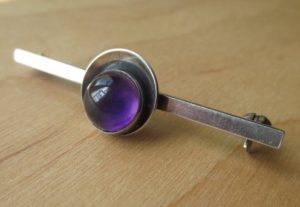
NE From (Niels Erik From) amethyst and sterling silver modernist bar brooch. For sale in my Etsy shop, Inglenookery: click on photo for details.
Despite the high regard in which his work is held, I haven’t been able to find out too much about Mr From. He first started working as a silversmith in 1931, and he registered his silversmithy in Nakskov, in south Denmark, in 1944. His earlier pieces developed out of the organic Skønvirke style, a Scandinavian development of the Art Nouveau and Arts and Crafts movements. From designed these early pieces himself, and they are characterised by floral and foliage motifs, as well as other inspirations from nature, such as fish.design.
From the 1950s onwards most of From’s pieces were designed by other designers, and have a markedly different look—out went the detailed, romantic designs from nature, and in came modernist, clean lines with abstract and geometric shapes. Occasionally the modern designs took nature as their inspiration, with abstract leaf and blossom shapes, but generally they followed the modern trend of the 1950s for sparse, minimalist design. But ever the canny businessman, From continued manufacturing some of the popular older Skønvirke style jewellery alongside the modernist pieces.
In 1960 From’s son-in-law Hilmer Jensen joined the company, and he took over following From’s death in 1982. However, the company failed to flourish and it closed in 1990.
I used to keep the pieces of his that I have sold listed here, but the page was getting too unwieldy. I have moved all my N E From sold pieces to a new page, here.
A more detailed exploration of one of From’s designs can be found here, with more to come as I find time to write them!
The maker’s marks on From’s pieces varied over the years. On the earliest pieces in the Skønvirke style, the maker’s mark is ‘FROM 830.S’, with the 830 referring to the silver content of 830 parts per 1000.
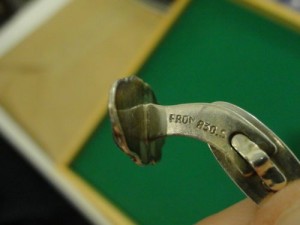
‘FROM 830.S’ on a silver cufflink by Niels Erik From in the Skønvirke style.
An intermediate mark used in the 1940s and 1950s, on the earlier Skønvirke style jewellery, reading ‘FROM 925S’ in capitals:
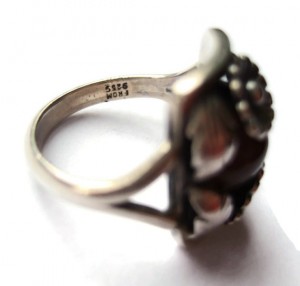
‘FROM 925S’ mark on one of the earlier Skønvirke style rings. The 925 refers to the silver content of 925 parts per 1000, ie sterling silver.
An intermediate mark used in the 1950s and 1960s, reading ”N.E. From’ in flowing handwriting-like script; sometimes also with ‘925S STERLING DANMARK’ in capitals used on a modernist ring from the 60s:
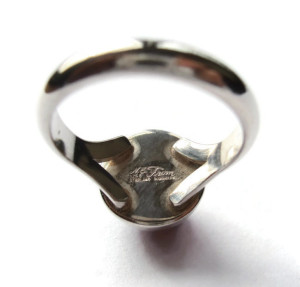
Modernist N E From amber ring I sold in my shop, with the same style of mark: Danmark spelling again. (NOW SOLD).
A different mark used from the 1950s onwards was ‘STERLING DENMARK N.E. FROM 925 S’. This mark occurs on both the modernist pieces and on the pieces in the earlier Skønvirke style that From continued to produce as they were so popular:
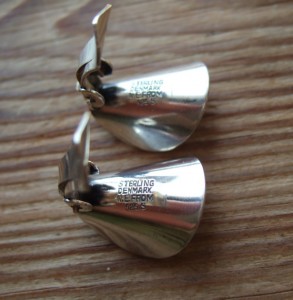
The maker’s mark on the back of the modernist clip on earrings in my Etsy shop, reading ‘STERLING DENMARK N.E. FROM 925 S’. (NOW SOLD).
Mark ‘FROM 925 S.’ used in the 1960s and 1970s: 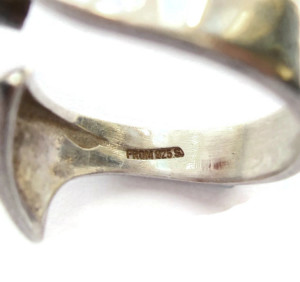 Mark used in the 1970s: ‘N.E. FROM STERLING 925S. DANMARK’:
Mark used in the 1970s: ‘N.E. FROM STERLING 925S. DANMARK’:
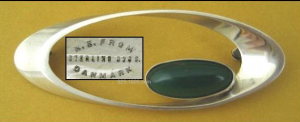
Mark on a brooch dating from the 1970s: ‘N.E. FROM STERLING 925S. DANMARK’


